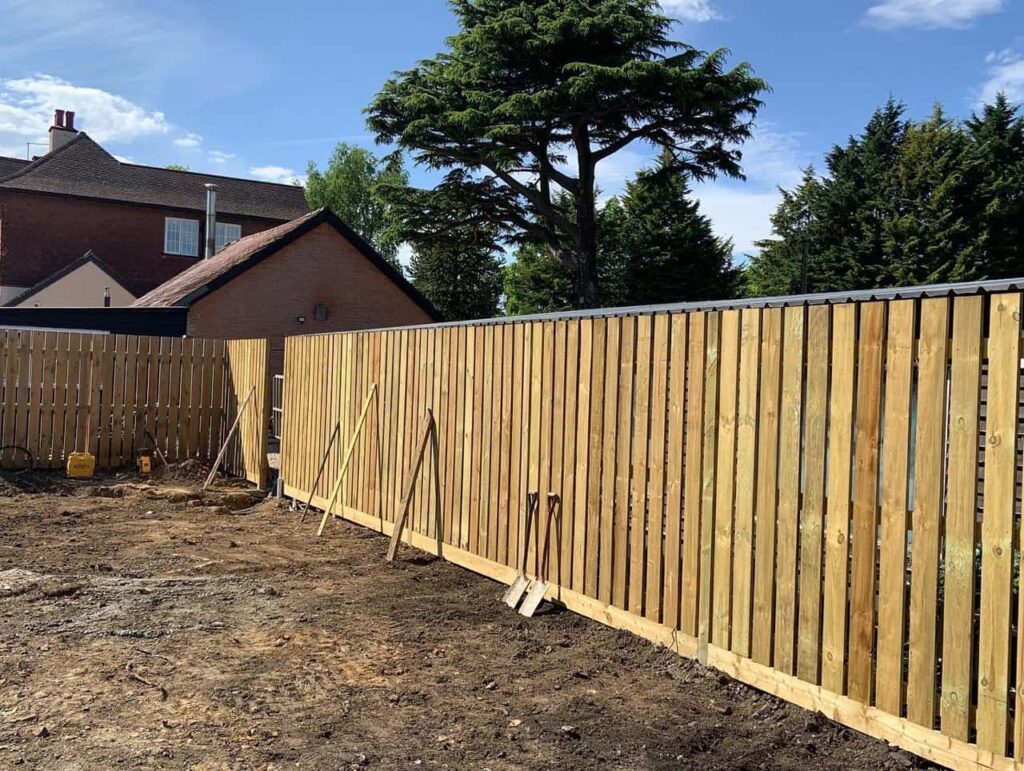Fixing Rot, Warping and Leaning Fence Panels – A Repair Checklist
A well-maintained fence not only adds kerb appeal to your property but also provides essential privacy and security. However, over time, exposure to the British weather can take its toll, leading to common issues such as rot, warping, and leaning panels. When these problems arise, timely repairs can prevent further deterioration and help your fence last for years to come. Fast Fix Fencing Soham specialises in restoring fences across Soham and surrounding areas, ensuring they remain strong, stable, and visually appealing.
Understanding the Common Causes of Fence Damage
Fences face year-round exposure to rain, wind, frost, and sun. These conditions can gradually weaken the materials, especially timber. Knowing what causes specific issues can help you take the right approach to repairs.
Rot
Wood rot is caused by moisture penetrating the timber, creating the ideal conditions for fungi to grow. Poor drainage around fence posts or constant contact with damp soil can accelerate this process.
Warping
Warping occurs when timber expands and contracts due to changing temperatures and moisture levels. This leads to uneven panels or boards that bend out of shape, compromising both appearance and function.
Leaning
A leaning fence often results from unstable or rotted posts, high winds, or loose fixings. Once a fence starts to tilt, the strain can affect adjacent panels, potentially causing a collapse if not corrected.
The Fence Repair Checklist
Repairing a damaged fence isn’t just about replacing panels — it’s about identifying the cause and addressing it properly to prevent a repeat issue. Here’s a step-by-step checklist from Fast Fix Fencing Soham to guide you through the process.
Step 1: Assess the Extent of the Damage
Walk the length of your fence and inspect each post, panel, and rail. Look for:
- Signs of discolouration or softness (a clear indicator of rot)
- Panels that have lifted or bowed
- Posts that wobble or move under pressure
- Loose nails, screws, or brackets
Identifying the root cause early helps determine whether repair or replacement is the best course of action.
Step 2: Address Rot and Moisture Damage
If the damage is localised, you can replace individual sections of rotten timber rather than the entire fence. For minor rot:
- Cut out the affected area and treat surrounding wood with a quality preservative
- Improve drainage around the base to reduce standing water
- Use concrete or gravel around post bases to prevent future moisture build-up
For extensive rot, it’s often more effective to replace the damaged post or panel entirely to ensure long-term stability.
Step 3: Straighten or Replace Warped Panels
Warped panels are usually the result of prolonged sun exposure or moisture imbalance. To fix this:
- Remove the panel and lay it flat in a shaded area
- Apply even pressure using weights to help it return to shape
- If the panel remains distorted, replacement is the most practical solution
Fast Fix Fencing Soham offers expert repair and replacement of warped panels using durable, weather-resistant materials that withstand future warping.
Step 4: Reinforce or Replace Leaning Posts
A leaning fence is often a sign that the supporting posts have weakened or shifted in the ground.
- Check the concrete base or soil stability around the post
- Re-secure the post using post supports, spikes, or concrete to restore strength
- If the post is rotted, remove and replace it entirely
Our team at Fast Fix Fencing Soham ensures that each repaired or replaced post is properly aligned and reinforced, keeping your fence upright and stable.
Step 5: Tighten Fixings and Realign Panels
Loose nails and brackets can cause panels to shift or sag. Replacing corroded fittings with galvanised or stainless-steel alternatives can prevent rust and extend the lifespan of your fence. Once all components are secured, check that panels are level and evenly spaced to maintain a neat and professional finish.
Preventing Future Fence Problems
Prevention is always better than cure. Once your fence is repaired, taking a few proactive measures can keep it in top condition:
- Apply a protective wood treatment annually to resist moisture and UV damage
- Ensure proper drainage around the base of the fence to prevent waterlogging
- Keep vegetation trimmed back to allow airflow and reduce moisture retention
- Schedule routine inspections to catch early signs of wear or movement
By maintaining your fence regularly, you can avoid costly repairs and keep your boundary looking strong and attractive all year round.
Conclusion
A damaged fence doesn’t always mean a full replacement is needed. With the right approach and professional attention, issues such as rot, warping, and leaning can often be corrected effectively. Fast Fix Fencing Soham provides expert fence repair and maintenance services throughout Soham and the wider Suffolk area. Whether your fence needs stabilising, re-aligning, or restoring, our team can ensure it remains secure, durable, and visually appealing for years to come.
If your fence is showing signs of wear or weather damage, contact Fast Fix Fencing Soham today to arrange a professional inspection and reliable repair service.
Call us on: 01353 88 0895
Click here to find out more about Fast Fix Fencing Soham
Click here to complete our contact form and see how we can help with your fencing needs.

